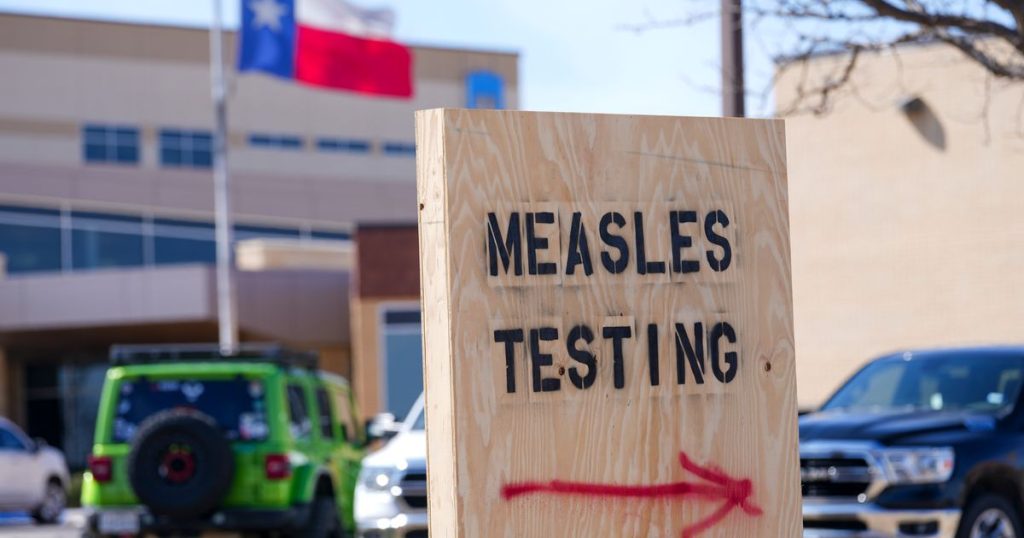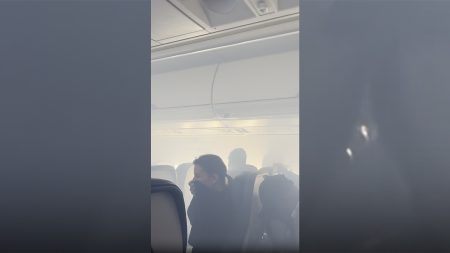A Measles Outbreak Spreads Across Texas and New Mexico: What You Need to Know
A Growing Outbreak with Rising Concerns
A measles outbreak in Texas and New Mexico has sickened at least 99 people, and health officials warn that the number of cases is expected to grow. As of late October, the Texas Department of State Health Services reported 90 confirmed cases, up from 48 cases just a week earlier. This sharp increase highlights the highly contagious nature of measles and the potential for further spread. Out of the 90 cases in Texas, 16 individuals required hospitalization, and with the exception of five people, all cases involved either unvaccinated individuals or those with an unknown vaccination status. This pattern underscores the critical role of vaccination in preventing the spread of measles.
The outbreak is particularly concentrated in certain regions. Gaines County, Texas, has reported the highest number of cases—57 in total. This area borders Lea County, New Mexico, where nine cases have been confirmed as of late October. Five of these cases involve adults over the age of 18, while four are children between the ages of 5 and 17. Measles is especially dangerous for young children and babies, who are at a higher risk of complications and life-threatening outcomes.
Meanwhile, the Centers for Disease Control and Prevention (CDC) has reported measles cases in other states, including Alaska, California, Georgia, New Jersey, New York, and Rhode Island. Nationwide, 25% of measles cases so far this year have resulted in hospitalizations, with the majority of those cases involving children under the age of 5 or individuals whose age is unknown. The outbreak has prompted urgent calls for vigilance and action from public health officials.
The Role of Vaccination Rates in the Outbreak
The measles outbreak in Texas and New Mexico has drawn attention to a concerning trend: declining vaccination rates across the United States. Measles was declared eliminated in the U.S. in 2000, thanks to high vaccination rates achieved through widespread use of the measles, mumps, and rubella (MMR) vaccine. The CDC reports that individuals who receive both doses of the MMR vaccine are considered protected for life against measles. However, vaccination rates have begun to drop in recent years, leaving communities vulnerable to outbreaks like the one currently impacting Texas and New Mexico.
Prior to 2020, the national vaccination rate in the U.S. was near 95%, a level sufficient to maintain herd immunity—a concept in which more than 95% of a community is immunized, protecting even those who are not vaccinated. However, during the COVID-19 pandemic, vaccination rates dropped to about 93%, and many states now fall below this critical threshold. The majority of states have vaccination rates lower than 95%, leaving gaps that allow preventable diseases like measles to spread.
The consequences of these declining rates are already evident. In 2022, the U.S. reported 285 measles cases, with 42% of those cases occurring in children under the age of 5. Alarmingly, 89% of these cases involved individuals who were either unvaccinated or had an unknown vaccination status. This trend highlights the importance of maintaining high vaccination rates to protect vulnerable populations and prevent the resurgence of preventable diseases.
The Risk of Losing Measles Elimination Status
The current outbreak has raised concerns that the U.S. may lose its measles elimination status, a designation achieved in 2000. Dr. Scott Gottlieb, former Commissioner of the Food and Drug Administration, has warned that the spread of measles in Texas and New Mexico could have far-reaching consequences. "When you have this much virus spreading in that portion of Texas and New Mexico, I think that there’s some inevitability that you’re going to see cases exported into those other states where there’s low vaccination rates, and you could see continuous spread across the country," Gottlieb said during an interview on CBS News’ "Face the Nation."
Losing measles elimination status could lead to serious repercussions, including travel advisories and economic impacts. The U.S. could face international travel restrictions if measles is no longer under control, as other countries may view the nation as a higher-risk destination. Additionally, ongoing outbreaks would strain public health resources, diverting attention and funding away from other critical health initiatives.
The situation serves as a stark reminder of the fragility of public health achievements and the need for sustained efforts to maintain high vaccination rates. While measles was once a rarity in the U.S., complacency and misinformation about vaccines have contributed to its resurgence, putting vulnerable populations at risk.
Prevention and Community Responsibility
To combat the outbreak, public health officials in Texas and New Mexico are urging residents to take immediate steps to protect themselves and their communities. New Mexico Gov. Michelle Lujan Grisham has called on individuals experiencing symptoms of measles to contact health officials before visiting public health clinics, in an effort to prevent further spread of the disease. This approach aims to minimize exposure and ensure that those infected receive proper care without putting others at risk.
The CDC emphasizes that vaccination remains the most effective way to prevent measles. The MMR vaccine is safe and highly effective, with two doses providing 97% protection against measles. Parents and caregivers are encouraged to ensure that children are up to date on their vaccinations, while adults who are unsure of their vaccination status should consult their healthcare providers.
Community-wide efforts are also essential to curbing the spread of measles. Schools, workplaces, and places of worship can play a critical role in promoting vaccination and raising awareness about the risks of measles. By working together, communities can help rebuild the protective wall of immunity that prevents outbreaks and protects those who cannot be vaccinated, such as young children and individuals with compromised immune systems.
Measles as a Global Challenge
The measles outbreak in Texas and New Mexico is part of a larger global trend. In recent years, measles cases have surged worldwide, driven by declining vaccination rates and disruptions to immunization programs caused by the COVID-19 pandemic. According to the World Health Organization (WHO), measles cases increased by 79% in the first two months of 2023 compared to the same period in 2022. This global resurgence highlights the interconnected nature of public health challenges and the need for coordinated efforts to address them.
In the U.S., the decline in vaccination rates is often linked to misinformation and vaccine hesitancy, which have been exacerbated by the pandemic. Addressing these challenges requires a multifaceted approach, including public education campaigns, community outreach, and policy changes to ensure access to vaccines. By learning from past successes—such as the near elimination of measles in 2000—public health officials can develop strategies to rebuild trust in vaccines and promote uptake.
The global nature of measles underscores the importance of vigilance and cooperation. As international travel becomes more common, the risk of importing and exporting measles cases increases. The U.S. must remain a global leader in promoting vaccination and supporting immunization efforts worldwide to prevent the spread of measles and other preventable diseases.
Conclusion: Learning from the Outbreak and Moving Forward
The measles outbreak in Texas and New Mexico serves as a wake-up call for the U.S. to re-examine its approach to vaccination and public health. While the country has made significant progress in controlling measles, the current situation highlights the risks of complacency and the importance of maintaining high vaccination rates.
The good news is that measles is a preventable disease, and the tools to combat it are readily available. By prioritizing vaccination, promoting accurate information, and fostering community-wide efforts, the U.S. can prevent future outbreaks and protect vulnerable populations. However, achieving these goals will require a collective effort—from healthcare providers and public health officials to parents and community leaders. Together, we can ensure that measles remains a rare and manageable disease, rather than a growing threat to public health.
As the situation in Texas and New Mexico continues to evolve, one thing is clear: the fight against measles is far from over. But with renewed commitment and cooperation, the U.S. can reclaim its progress and build a healthier, safer future for all.















